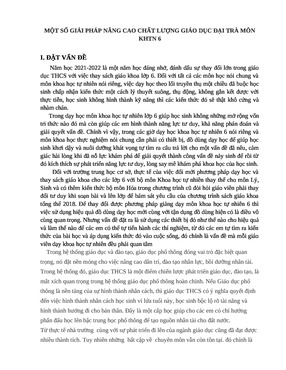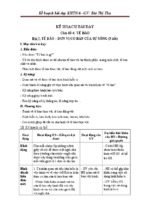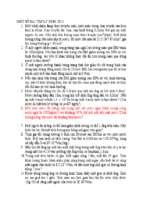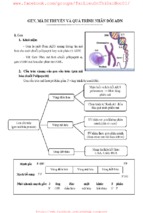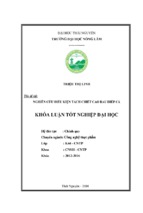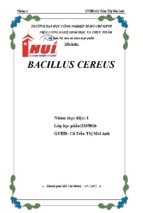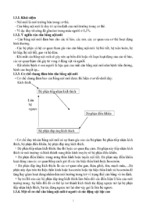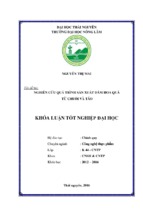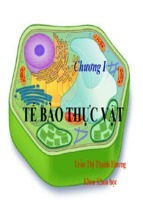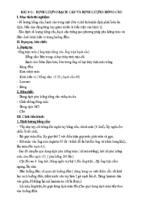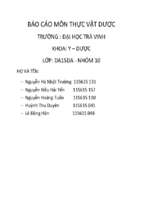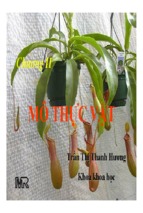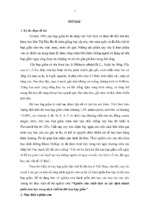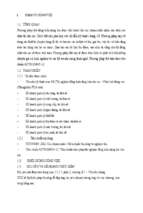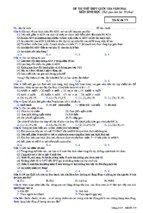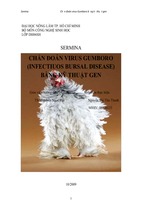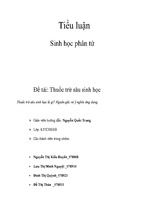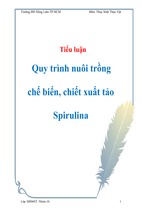user guide
Pichia Expression Kit
For expression of recombinant proteins in
Pichia pastoris
Catalog Number K1710-01
Revision A.0
Publication Number MAN0000012
For Research Use Only. Not for diagnostic procedures.
Research Use Only. Not for use in diagnostic procedures.
The information in this guide is subject to change without notice.
DISCLAIMER
LIFE TECHNOLOGIES CORPORATION AND/OR ITS AFFILIATE(S) DISCLAIM ALL WARRANTIES WITH RESPECT TO
THIS DOCUMENT, EXPRESSED OR IMPLIED, INCLUDING BUT NOT LIMITED TO THOSE OF MERCHANTABILITY,
FITNESS FOR A PARTICULAR PURPOSE, OR NON-INFRINGEMENT. TO THE EXTENT ALLOWED BY LAW, IN NO
EVENT SHALL LIFE TECHNOLOGIES AND/OR ITS AFFILIATE(S) BE LIABLE, WHETHER IN CONTRACT, TORT,
WARRANTY, OR UNDER ANY STATUTE OR ON ANY OTHER BASIS FOR SPECIAL, INCIDENTAL, INDIRECT, PUNITIVE,
MULTIPLE OR CONSEQUENTIAL DAMAGES IN CONNECTION WITH OR ARISING FROM THIS DOCUMENT, INCLUDING
BUT NOT LIMITED TO THE USE THEREOF.
Important Licensing Information
This product may be covered by one or more Limited Use Label Licenses. By use of this product, you accept the
terms and conditions of all applicable Limited Use Label Licenses.
Trademark
The trademarks mentioned herein are the property of Life Technologies Corporation and/or its affiliates or their
respective owners.
©2014 Life Technologies Corporation. All rights reserved.
ii
Contents
Kit contents and storage .................................................................................................................................... 2
Required materials not included with the kit ................................................................................................. 4
Introduction .................................................................................................................... 5
Pichia pastoris expression system ..................................................................................................................5
Experimental outline .......................................................................................................................................... 8
Methods ........................................................................................................................ 11
Pichia strains .....................................................................................................................................................11
E. coli strains .....................................................................................................................................................14
Select a Pichia expression vector .................................................................................................................. 15
pHIL-D2 ............................................................................................................................................................... 18
pPIC3.5 ................................................................................................................................................................ 19
pHIL-S1 ............................................................................................................................................................... 20
pPIC9 ................................................................................................................................................................... 21
Signal sequence processing............................................................................................................................ 22
Clone into the Pichia expression vectors ...................................................................................................... 23
Transformation into E. coli .............................................................................................................................. 29
Prepare transforming DNA ............................................................................................................................. 31
Grow Pichia for spheroplasting ...................................................................................................................... 35
Prepare spheroplasts ...................................................................................................................................... 37
Transform Pichia ............................................................................................................................................... 39
Screen for Mut+ and MutS transformants ...................................................................................................... 42
PCR analysis of Pichia integrants................................................................................................................... 47
Expression of recombinant Pichia strains .................................................................................................... 49
Analyze samples by SDS-polyacrylamide gel electrophoresis................................................................. 53
Optimize Pichia protein expression ............................................................................................................... 56
Scale up expression.......................................................................................................................................... 58
Protein purification and glycosylation .......................................................................................................... 61
Appendix ....................................................................................................................... 63
E. coli media recipes.........................................................................................................................................63
Pichia media recipes.........................................................................................................................................64
Proteins expressed in Pichia .......................................................................................................................... 71
Recombination and integration in Pichia ...................................................................................................... 73
Electroporation of Pichia ................................................................................................................................. 77
PEG 1000 transformation method for Pichia ................................................................................................ 78
Lithium chloride transformation method ..................................................................................................... 80
Direct PCR screening of Pichia clones........................................................................................................... 82
Isolate total DNA from Pichia .......................................................................................................................... 83
Detect multiple integration events ................................................................................................................ 85
Isolate total RNA from Pichia .......................................................................................................................... 88
Beta-Galactosidase assay................................................................................................................................ 90
Accessory products .......................................................................................................................................... 92
Documentation and support ............................................................................................................................ 93
References ......................................................................................................................................................... 94
Pichia Expression Kit User Guide
1
Kit contents and storage
Kit contents
The Pichia Expression Kit is shipped at room temperature and contains the
following components.
Spheroplast Module (Box 1). Store at room temperature.
Reagent
Amount
Components
SOS medium
20 mL
1 M Sorbitol
0.3X YPD
10 mM CaCl2
Sterile Water
2 × 125 mL
Autoclaved, deionized water
SE
2 × 125 mL
1 M Sorbitol
25 mM EDTA, pH 8.0
SCE
2 × 125 mL
1 M Sorbitol
10 mM Sodium citrate buffer, pH 5.8
1 mM EDTA
1 M Sorbitol
2 × 125 mL
–
CaS
2 × 60 mL
1 M Sorbitol
10 mM Tris-HCl, pH 7.5;
10 mM CaCl2
40% PEG
25 mL
40% (w/v) PEG 3350 (Reagent grade) in water
CaT
25 mL
20 mM Tris-HCl, pH 7.5
20 mM CaCl2
Spheroplast Module (Box 2). Store at –20°C.
Reagent
Amount
Components
Zymolyase
10 × 20 µL
3 mg/mL Zymolyase in water
(100,000 units/g lytic activity)
1 M DTT
10 × 1 mL
1 M dithiothreitol in water
Stab Vials: Pichia and E. coli stabs. Store at 4°C.
Strain
Phenotype
(Pichia only)
Amount
Genotype
GS115
1 stab
KM71
GS115 Albumin
1 stab
1 stab
GS115 β-Gal
TOP10F´
1 stab
1 stab
his4
arg4 his4 aox1::ARG4
HIS4
HIS4
Mut+
MutS, Arg+
MutS
Mut+
q
F´ {proAB, lacI , lacZΔM15, Tn10 (TetR)} mcrA,
Δ(mrr-hsdRMS-mcrBC), φ80lacZΔM15,
ΔlacX74, deoR, recA1, λ– araD139, Δ(araleu)7697, galU, galK, rpsL(StrR), endA1, nupG
Continued on next page
2
Pichia Expression Kit User Guide
Kit contents and storage, continued
Kit contents,
continued
Vectors. Store at –20°C.
Reagent
Description
pHIL-D2
10 µg, 20 µL at 0.5 µg/µL in
TE buffer, pH 8.0*
Vector for intracellular expression in Pichia.
pPIC3.5
10 µg, 20 µL at 0.5 µg/µL in
TE buffer, pH 8.0
pHIL-S1
10 µg, 20 µL at 0.5 µg/µL in
TE buffer, pH 8.0
Vector for intracellular expression in Pichia.
pPIC9
10 µg, 20 µL at 0.5 µg/µL in
TE buffer, pH 8.0
Vector for secreted expression in Pichia.
Uses the α-factor signal sequence.
Vector for secreted expression in Pichia.
Uses the PHO1 signal sequence.
*TE buffer, pH 8.0: 10 mM Tris-HCl, 1 mM EDTA, pH 8.0
Primers. Store at –20°C.
Media
5´ AOX1 sequencing primer
2 µg (312 pmoles), lyophilized
3´ AOX1 sequencing primer
2 µg (314 pmoles), lyophilized
5´-GACTGGTTCCAATTGACAAGC-3´
α-Factor sequencing primer
2 µg (315 pmoles), lyophilized
5´-TACTATTGCCAGCATTGCTGC-3´
5´-GCAAATGGCATTCTGACATCC-3´
The following prepackaged media is included for your convenience. Instructions
for use are provided on the package. Store at room temperature.
Media
Amount
Yield
YP Base Medium
2 pouches
2 liters of YP medium
YP Base Agar Medium
2 pouches
2 liters of YP medium
Yeast Nitrogen Base
1 pouch
500 mL of 10X YNB
Note: The Pichia Spheroplast Module for transforming Pichia by spheroplasting is
available separately from Life Technologies (see Accessory products, page 92 for
ordering information).
Pichia Expression Kit User Guide
3
Required materials not included with the kit
Required materials
4
•
30°C rotary shaking incubator
•
Water baths capable of 37°C, 45°C, and 100°C
•
Centrifuge suitable for 50 mL conical tubes (floor or table-top)
•
Baffled culture flasks with metal covers (50 mL, 250 mL, 500 mL, 1000 mL,
and 3 L)
•
50 mL sterile, conical tubes
•
6 mL and 15 mL sterile snap-top tubes
•
UV Spectrophotometer
•
Mini agarose gel apparatus and buffers
•
Agarose and low-melt agarose
•
Polyacrylamide gel electrophoresis apparatus and buffers
•
Media for transformation, growth, screening, and expression (see Recipes,
pages 63–70)
•
5% SDS solution (10 mL per transformation)
•
Sterile cheesecloth or gauze
•
Breaking Buffer (see Recipes, page 70)
•
Acid-washed glass beads (available from Sigma)
•
Replica-plating equipment (optional)
•
Bead Beater™ (optional, available from Biospec)
Pichia Expression Kit User Guide
Introduction
Pichia pastoris expression system
General
characteristics of
Pichia pastoris
Similarity to
Saccharomyces
As a eukaryote, Pichia pastoris has many of the advantages of higher eukaryotic
expression systems such as protein processing, protein folding, and
posttranslational modification, while being as easy to manipulate as E. coli or
Saccharomyces cerevisiae. It is faster, easier, and less expensive to use than other
eukaryotic expression systems such as baculovirus or mammalian tissue culture,
and generally gives higher expression levels. Yeast shares the advantages of
molecular and genetic manipulations with Saccharomyces, and has the added
advantage of 10- to 100-fold higher heterologous protein expression levels. These
features make Pichia very useful as a protein expression system.
Many of the techniques developed for Saccharomyces may be applied to Pichia.
These include:
•
•
•
Transformation by complementation
Gene disruption
Gene replacement
In addition, the genetic nomenclature used for Saccharomyces has been applied to
Pichia. For example, the HIS4 gene in both Saccharomyces and Pichia encodes
histidinol dehydrogenase. There is also cross-complementation between gene
products in both Saccharomyces and Pichia. Several wild-type genes from
Saccharomyces complement comparable mutant genes in Pichia. Genes such as
HIS4, LEU2, ARG4, TRP1, and URA3 all complement their respective mutant
genes in Pichia.
Pichia pastoris as
a methylotrophic
yeast
Pichia pastoris is a methylotrophic yeast, capable of metabolizing methanol as its
sole carbon source. The first step in the metabolism of methanol is the oxidation of
methanol to formaldehyde using molecular oxygen by the enzyme alcohol oxidase.
In addition to formaldehyde, this reaction generates hydrogen peroxide. To avoid
hydrogen peroxide toxicity, methanol metabolism takes place within a specialized
cell organelle, called the peroxisome, which sequesters toxic by-products away
from the rest of the cell. Alcohol oxidase has a poor affinity for O2, and Pichia
pastoris compensates by generating large amounts of the enzyme. The promoter
regulating the production of alcohol oxidase is the one used to drive heterologous
protein expression in Pichia.
Continued on next page
Pichia Expression Kit User Guide
5
Pichia pastoris expression system, continued
Two alcohol
oxidase proteins
Two genes in Pichia pastoris code for alcohol oxidase–AOX1 and AOX2. The AOX1
gene product accounts for the majority of alcohol oxidase activity in the cell.
Expression of the AOX1 gene is tightly regulated and induced by methanol to
very high levels, typically ≥ 30% of the total soluble protein in cells grown on
methanol. The AOX1 gene has been isolated and a plasmid-borne version of the
AOX1 promoter is used to drive expression of the gene of interest encoding the
desired heterologous protein (Ellis et al., 1985; Koutz et al., 1989; Tschopp et al.,
1987a). While AOX2 is about 97% homologous to AOX1, growth on methanol is
much slower than with AOX1. This slow growth on methanol allows isolation of
MutS strains (aox1) (Cregg et al., 1989; Koutz et al., 1989).
Expression
Expression of the AOX1 gene is controlled at the level of transcription. In methanolgrown cells approximately 5% of the polyA+ RNA is from the AOX1 gene. The
regulation of the AOX1 gene is a two step process: a repression/derepression
mechanism plus an induction mechanism (e.g., GAL1 gene in Saccharomyces
(Johnston, 1987)). Briefly, growth on glucose represses transcription, even in the
presence of the inducer methanol. For this reason, growth on glycerol is
recommended for optimal induction with methanol. Note that growth on glycerol
only (derepression) is not sufficient to generate even minute levels of expression
from the AOX1 gene. The inducer, methanol, is necessary for even detectable levels
of AOX1 expression (Ellis et al., 1985; Koutz et al., 1989; Tschopp et al., 1987a).
Phenotype of
aox1 mutants
Loss of the AOX1 gene, and thus a loss of most of the cell's alcohol oxidase activity,
results in a strain that is phenotypically MutS (Methanol utilization slow). This has
in the past been referred to as Mut–. The MutS designation has been chosen to
accurately describe the phenotype of these mutants. This results in a reduction in
the cells' ability to metabolize methanol. The cells, therefore, exhibit poor growth
on methanol medium. Mut+ (Methanol utilization plus) refers to the wild type
ability of strains to metabolize methanol as the sole carbon source. These two
phenotypes are used when evaluating Pichia transformants for integration of your
gene (Experimental Outline, page 8).
Intracellular and
secretory protein
expression
Heterologous expression in Pichia pastoris can be intracellular or secreted.
Secretion requires the presence of a signal sequence on the expressed protein to
target it to the secretory pathway. While several different secretion signal
sequences have been used successfully, including the native secretion signal
present on some heterologous proteins, success has been variable. The secretion
signal sequence from the Saccharomyces cerevisiae factor prepro peptide has been
used with the most success (Cregg et al., 1993; Scorer et al., 1993).
The major advantage of expressing heterologous proteins as secreted proteins is
that Pichia pastoris secretes very low levels of native proteins. Since there is very
low amount of protein in the minimal Pichia growth medium, this means that the
secreted heterologous protein comprises the vast majority of the total protein in
the medium and serves as the first step in purification of the protein (Barr et al.,
1992) . However, that if there are recognized glycosylation sites (Asn-X-Ser/Thr)
in your protein's primary sequence, glycosylation may occur at these sites.
Continued on next page
6
Pichia Expression Kit User Guide
Pichia pastoris expression system, continued
Posttranslational
modifications
In comparison to Saccharomyces cerevisiae, Pichia may have an advantage in the
glycosylation of secreted proteins because it may not hyperglycosylate. Both
Saccharomyces cerevisiae and Pichia pastoris have a majority of N-linked
glycosylation of the high-mannose type; however, the length of the
oligosaccharide chains added posttranslationally to proteins in Pichia (average
8–14 mannose residues per side chain) is much shorter than those in Saccharomyces
cerevisiae (50–150 mannose residues) (Grinna and Tschopp, 1989; Tschopp et al.,
1987b). Very little O-linked glycosylation has been observed in Pichia.
In addition, Saccharomyces cerevisiae core oligosaccharides have terminal
α1,3 glycan linkages whereas Pichia pastoris does not. It is believed that the
α1,3 glycan linkages in glycosylated proteins produced from Saccharomyces
cerevisiae are primarily responsible for the hyper-antigenic nature of these proteins
making them particularly unsuitable for therapeutic use. Although not yet
proven, this is predicted to be less of a problem for glycoproteins generated in
Pichia pastoris, because it may resemble the glycoprotein structure of higher
eukaryotes (Cregg et al., 1993).
Pichia Expression Kit User Guide
7
Experimental outline
Vector selection
and cloning
Transformation
and integration
To utilize the strong, highly inducible PAOX1 promoter for expressing your protein,
four expression vectors are included in this kit. pHIL-D2 and pPIC3.5 are used for
intracellular expression, and pHIL-S1 and pPIC9 are used for secreted expression
(see pages 18–21 for more information). Before cloning your insert, you must:
•
Decide whether you want intracellular or secreted expression.
•
Analyze your insert for the following restriction sites: Sac I, Stu I, Sal I, Not I,
and Bgl II. We recommend these sites for linearizing your construct prior to
Pichia transformation. If your insert has all of these sites, refer to pages 33–34
for alternate sites.
Two different phenotypic classes of His+ recombinant strains can be generated:
Mut+ and MutS. MutS refers to the "Methanol utilization slow" phenotype caused
by the loss of alcohol oxidase activity encoded by the AOX1 gene. A strain with a
MutS phenotype has a mutant aox1 locus, but is wild type for AOX2. This results
in a slow growth phenotype on methanol medium. Transformation of strain
GS115 can yield both classes of transformants, His+ Mut+ and His+ MutS, while
KM71 yields only His+ MutS, because the strain itself is MutS. Both Mut+ and
MutS recombinants are useful to have, because one phenotype may favor better
expression of your protein than the other. Because of clonal variation, you should
test 6–10 recombinants per phenotype. There is no way to predict beforehand
which construct or isolate will better express your protein. We strongly
recommend that you analyze Pichia recombinants by PCR to confirm the
integration of your construct (see page 47).
After you have successfully cloned your gene, you will linearize your plasmid to
stimulate recombination when the plasmid is transformed into Pichia. The table
below describes the types of recombinants you will get by selective digestion of
your plasmid.
Restriction
enzyme
Integration event
GS115 phenotype
KM71 phenotype
Sal I or Stu I
Insertion at his4
His+ Mut+
His+ MutS
Sac I
Insertion at 5´ AOX1 His+ Mut+
region
His+ MutS
Not I or Bgl II
Replacement at
AOX1 locus
His+ MutS
His+ Mut+
His+ MutS (not
recommended, see
page 11)
Continued on next page
8
Pichia Expression Kit User Guide
Experimental outline, continued
Expression and
scale-up
After confirming your Pichia recombinants by PCR, you will test expression of
both His+ Mut+ and His+ MutS recombinants. This procedure involves growing a
small culture of each recombinant, inducing them with methanol, and taking time
points. If looking for intracellular expression, analyze the cell pellet from each
time point by SDS polyacrylamide gel electrophoresis (SDS-PAGE). If looking for
secreted expression, analyze both the cell pellet and supernatant from each time
point. We recommend that you analyze your SDS-PAGE gels by Coomassie
staining and, if you have an antibody to your protein, by western blot. We also
suggest checking for protein activity by an activity assay, if one is available. Not
all proteins express to the level of grams per liter, so it is advisable to check by
western blot or activity assay, and not just by Coomassie staining of SDS-PAGE
gels for production of your protein.
Choose the Pichia recombinant strain that best expresses your protein and
optimize induction based on the suggestions on pages 56–57. After you optimize
expression, scale-up your expression protocol to produce more protein.
Experimental
process
The overall experimental process is divided into two major sections: Generating
Recombinant Strain and Induction (Mut+ and/or MutS). Each section contains a
table outlining the major steps of the experimental process. Each step is
discussed in detail further in the manual. Refer to the indicated pages to read
about particular steps of interest. The discussion about recombination and
integration in Pichia will help you choose the right vector. For more information,
refer to the review by Higgins (Higgins, 1995).
Generate
recombinant
strain
The goal of this section is to create a Pichia pastoris strain containing your
integrated gene of interest. Before starting your experiments, determine which
vector to use.
Step
Procedure
Page
1
Select the appropriate expression vector (For more information,
refer to Recombination and integration in Pichia, pages 73–
76)
15–21
2
Clone gene of interest into selected vector
23–28
3
Transform E. coli, select ampicillin-resistant transformants,
and confirm the presence and orientation of gene of interest
4
Linearize the constructs with appropriate restriction enzymes to 31–34
generate His+ MutS and His+ Mut+ recombinant strains
5
Transform and select His+ transformants (GS115 recombinants,
His+ Mut+; KM71 recombinants, His+ MutS)
35–41
6
Screen His+ transformants for Mut+ and MutS strains (6–10
recombinants of each phenotype)
42–46
7
Confirm the integration of your gene of interest in Mut+ and MutS 47–48
recombinants by PCR
29
Continued on next page
Pichia Expression Kit User Guide
9
Experimental outline, continued
Mut+ induction
The method of induction depends on whether the recombinant is Mut+ or MutS.
The differences primarily occur in the culture volumes and the time of induction
(see below). Refer to the following pages for more detailed instructions.
Step
1
MutS induction
Page
Guidelines for expression of recombinant proteins in Pichia
His+
49–50
Mut+
2
Grow
recombinants in 25 mL of buffered glycerol
medium to a final OD600 = 2–6
51
3
Harvest the cells and resuspend them to an OD600 of 1.0
(~100–200 mL) with methanol medium. Place the cell
suspension in a 1 liter baffled flask
51
4
Incubate the culture at 30°C with shaking and take samples for
analysis at 0, 6, 12, 24, 36, 48, 60, 72, 84, and 96 hours
51
5
Analyze the medium (if protein of interest is targeted for
secretion) and the cell lysates (for intracellular and secreted
expression) for protein via PAGE/Coomassie Blue staining,
western blot, activity, ELISA, or immunoprecipitation
53–55
6
Optimize expression of your His+ Mut+ recombinant
56–57
7
Scale-up your expression for protein purification
58–60
This is very similar to Mut+ induction except that MutS grow very slowly on
methanol. To compensate, cells are concentrated to increase cell mass before
induction.
Step
10
Procedure
Procedure
Page
1
Guidelines for expression of recombinant proteins in Pichia
2
Grow His+ MutS recombinants in 100–200 mL of buffered
glycerol medium to a final OD600 = 2–6
52
3
Harvest the cells and resuspend them to an OD600 of 10.0
(~10–20 mL) with methanol medium. Place the cell suspension
in a 100 mL or 250 mL baffled flask.
52
4
Incubate the culture at 30°C with shaking and take samples for
analysis at 0, 24, 48, 72, 96, 120, and 144 hours
52
5
Analyze the medium (if protein of interest is targeted for
secretion) and the cell lysates (for intracellular and secreted
expression) for protein via PAGE/Coomassie Blue staining,
western blot, activity, ELISA, or immunoprecipitation
53–55
6
Optimize expression of your His+ Mut+ recombinant
56–57
7
Scale-up your expression for protein purification
58–60
49–50
Pichia Expression Kit User Guide
Methods
Pichia strains
Introduction
Pichia pastoris is quite similar to Saccharomyces cerevisiae as far as general growth
conditions and handling. You should be familiar with basic microbiological and
sterile techniques before attempting to grow and manipulate any microorganism.
You should also be familiar with basic molecular biology and protein chemistry.
Some general references to consult are Guide to Yeast Genetics and Molecular
Biology (Guthrie & Fink, 1991), Current Protocols in Molecular Biology (Ausubel et
al., 1994), Molecular Cloning: A Laboratory Manual (Sambrook et al., 1989), Protein
Methods (Bollag et al., 1996), and Guide to Protein Purification (Deutscher, 1990).
Genotype of
Pichia strain
The Pichia host strains GS115 and KM71 have a mutation in the histidinol
dehydrogenase gene (his4) that prevents them from synthesizing histidine. All
expression plasmids carry the HIS4 gene that complements his4 in the host, so
transformants are selected for their ability to grow on histidine-deficient medium.
Spontaneous reversion of GS115 and KM71 to His+ prototrophy is less than 1 out
of 108.
The parent strain of KM71 has a mutation in the argininosuccinate lyase gene
(arg4) that prevents the strain from growing in the absence of arginine. The wildtype ARG4 gene was used to disrupt AOX1, creating KM71, a MutS, Arg+, His–
strain.
Both GS115 and KM71 will grow on complex medium such as YPD (also known
as YEPD) and on minimal media supplemented with histidine. Until transformed,
neither GS115 nor KM71 will grow on minimal medium alone as they are His–.
Note: MutS (Methanol utilization slow) phenotype has in the past been referred to as Mut–.
The MutS designation has been chosen to accurately describe the phenotype of these
mutants.
Construction of
KM71
The ARG4 gene (~2 kb) was inserted into the cloned, wild-type AOX1 gene
between the BamH I site (codons 15/16 of AOX1) and the Sal I site (codons
227/228 of AOX1). ARG4 replaces codons 16 through 227 of AOX1. This construct
was transformed into the parent strain of KM71 (arg4 his4) and Arg+
transformants were isolated and analyzed for the MutS phenotype. Genetic
analysis of Arg+ transformants showed that the wild-type AOX1 gene was
replaced by the aox1::ARG4 construct.
IMPORTANT: The advantage of using KM71 is that there is no need to screen for
the Mut phenotype on methanol minimal medium. All transformants will be
MutS. Secondly, since the AOX1 locus was not completely deleted, it is
theoretically possible to replace aox1::ARG4 with your construct by gene
replacement. The phenotype of this strain would be His+ MutS Arg–. This means
the recombinant strain would require arginine in the medium to grow.
Unfortunately, simple inclusion of arginine does not totally alleviate the effects of
the arg4 mutation, and arg4 strains do not grow well on minimal medium
supplemented with arginine. Therefore, we do not recommend that you generate
His+ transformants in KM71 by replacing the aox1::ARG4 construct.
Continued on next page
Pichia Expression Kit User Guide
11
Pichia strains, continued
Control
expression
strains
GS115/His+ MutS Albumin: This strain is a control for secreted expression and
the MutS phenotype when screening Pichia transformants (page 42). The gene for
serum albumin was cloned with its native secretion signal, then integrated into
Pichia at the AOX1 locus. This strain secretes albumin (67 kDa) into the medium
at levels > 1 gram/liter.
GS115/His+ Mut+ β-galactosidase: This strain is a control for intracellular
expression and the Mut+ phenotype when screening Pichia transformants
(page 42). The gene for β-galactosidase (lacZ) was integrated into Pichia at the
his4 locus. This strain expresses β-galactosidase (117 kDa) at levels that can be
detected on Coomassie-stained SDS-PAGE (see pages 53–55) or assayed using
ONPG (see page 90–91).
Grow Pichia
strains
The growth temperature of Pichia pastoris is 28–30°C for liquid cultures, plates,
and slants. Growth above 32°C during induction can be detrimental to protein
expression and can even lead to cell death. Other important facts:
•
Doubling time of log phase Mut+ or MutS Pichia in YPD is ~2 hours
•
Mut+ and MutS strains do not differ in growth rates unless grown on
methanol
•
Doubling time of log phase Mut+ Pichia in methanol medium (MM) is
4–6 hours
•
Doubling time of log phase MutS Pichia in MM is ~18 hours
•
One OD600 = ~5 × 107 cells/mL
Note: Growth characteristics may vary depending on the recombinant strain.
Growth on
methanol
When plates or medium containing methanol are used as growth medium, it is
advisable to add methanol every day to compensate for loss due to evaporation
or consumption.
•
For plates add 100 μL of 100% methanol to the lid of the inverted plate.
•
For liquid medium add 100% methanol to a final concentration of 0.5%.
Some researchers have had success adding methanol to 1% every day for MutS
strains and up to 3% for Mut+ without any negative effect to their liquid culture.
Continued on next page
12
Pichia Expression Kit User Guide
Pichia strains, continued
Recommendation: Make frozen stocks for long-term storage of all three Pichia
strains included in this kit (see below).
Store Pichia
strains
To store cells for weeks to months, use YPD medium or YPD agar slants (see
page 65).
1.
Streak for single colonies of the desired strain on YPD.
2.
Transfer one colony to a YPD stab and grow for 2 days at 30°C.
3.
You can store the cells on YPD for several weeks at 4°C.
To store cells for months to years, store frozen at –80°C.
1.
Culture a single colony of the desired strain overnight in YPD.
2.
Harvest the cells and suspend in YPD containing 15% glycerol at a final
OD600 of 50–100 (approximately 2.5 × 109–5.0 × 109 cells/mL).
3.
Freeze the cells in liquid nitrogen or a dry ice/ethanol bath, and store
at –80°C.
Note: After extended storage at 4°C or –80°C, we recommend checking the His+
transformants for correct genotype and viability by streaking on MM, MD or
MGY plates before using again.
Pichia Expression Kit User Guide
13
E. coli strains
E. coli strain
genotype
The E. coli strain, TOP10F´ is provided in case no suitable E. coli strain is
available. Other strains which may be suitable are TOP10, DH5αF´, JM109, or
any other strain which is recombination deficient (recA) and deficient in
endonuclease A (endA).
q
F´ {proAB, lacI , lacZΔM15, Tn10 (TetR)} mcrA, Δ(mrr-hsdRMS-mcrBC),
φ80lacZΔM15, ΔlacX74, recA1, λ– araD139, Δ(ara-leu)7697, galU, galK, rpsL(StrR),
endA1, nupG
Note: If you do not plan to perform single-stranded DNA rescue, E. coli strains
that do not carry the F´ episome are also suitable for use.
Recommendation: We recommend that you make a frozen stock of TOP10F´ to
keep on hand.
14
1.
Culture TOP10F´ in 5 mL LB with 10 μg/mL tetracycline. Grow overnight.
2.
Mix thoroughly 0.85 mL of culture with 0.15 mL sterile glycerol.
3.
Transfer to a freezer vial and freeze in liquid nitrogen or a dry ice/ethanol
bath.
4.
Store at –80°C.
Pichia Expression Kit User Guide
Select a Pichia expression vector
Generic structure
All the vectors included in this kit share several general features shown in black,
while some of the vectors also have signal sequences (Sig) and/or an f1
bacteriophage origin. For details of each individual plasmid refer to pages 18–21.
Sig
Sac I
5'
1
AOX
Transcription
Termination (TT)
HIS4
f1 ori
Not I or
Bgl II
MCS
Am
p
3 ' AO X
Sal I
Stu I
1
Not I or
Bgl II
Note: There is no yeast origin of replication in any of the Pichia expression
vectors included in this kit. His+ transformants can only be isolated if
recombination occurs between the plasmid and the Pichia genome.
Continued on next page
Pichia Expression Kit User Guide
15
Select a Pichia expression vector, continued
Features
The table below describes the general and optional features of the Pichia
expression vectors.
Feature
Description
Benefit
5´ AOX1
An ~1000 bp fragment
containing the AOX1 promoter
Sig
DNA sequence coding for an N- Targets desired protein for
secretion
terminal protein secretion
signal
MCS
Multiple Cloning Site
Allows insertion of your gene into
the expression vector
TT
Native transcription
termination and
polyadenylation signal from
AOX1 gene (~260 bp)
Permits efficient transcription
termination and polyadenylation of
the mRNA
HIS4
Pichia wild-type gene coding
Provides a selectable marker to
for histidinol dehydrogenase
isolate Pichia recombinant strains
(~2.4 kb) and used to
complement Pichia his4 strains
3´ AOX1
Sequences from the AOX1 gene Targets plasmid integration at the
that are further 3´ to the TT
AOX1 gene
sequences (~650 bp)
Amp
pBR322
origin
Ampicillin resistance gene
E. coli origin of replication
Allows selection, replication, and
maintenance in E. coli
f1 origin
Bacteriophage f1 origin of
replication (458 bp)
Permits generation of singlestranded DNA for mutagenesis
Not I
Bgl II
Sac I
Sal I
Stu I
Unique restriction sites
Permits linearization of vector for
efficient integration into the Pichia
genome
Allows methanol-inducible high
level expression in Pichia
Targets plasmid integration to the
AOX1 locus
Continued on next page
16
Pichia Expression Kit User Guide
Select a Pichia expression vector, continued
Select a vector
If your protein is cytosolic and non-glycosylated, you may elect to express the
protein intracellularly. However, there is evidence of a non-glycosylated protein
being secreted without extensive modification (Despreaux and Manning, 1993).
Note that the protein in question was a secreted, bacterial protein with one
N-glycosylation site. Check your protein sequence for possible N-glycosylation
sites (Asn-X-Ser/Thr) before cloning a cytosolic protein into a secretion vector.
If your protein is normally secreted, glycosylated, or directed to an intracellular
organelle, you may wish to try secreting your protein. We recommend that you
try both the native secretion signal and the α-factor signal sequence (in pPIC9) to
secrete your protein. There has been better success reported with the α-factor
signal sequence than with the PHO1 signal sequence in pHIL-S1. This may be
due to the lack of KEX2-like processing signals in the PHO1 signal sequence
(Laroche et al., 1994).
Pichia Expression Kit User Guide
17
pHIL-D2
Description
The details of pHIL-D2 are listed below:
•
8,209 bp nonfusion vector
•
One unique EcoR I site
•
For intracellular expression of your gene
•
Requires an initiating ATG codon in a Kozak consensus sequence for proper
translation initiation of your gene (Cavener and Stuart, 1991; Kozak, 1987;
Kozak, 1990)
•
HIS4 selection in Pichia
•
For insertion at AOX1 in GS115 or KM71, linearize with Sac I (generates
His+ Mut+ in GS115 and His+ MutS in KM71)
•
For insertion at HIS4, linearize with Sal I or Stu I (generates His+ Mut+ in
GS115 and His+ MutS in KM71)
•
For a gene replacement at AOX1 in GS115, linearize with Not I (generates
His+ MutS)
Refer to page 33 for alternate restriction sites if your insert DNA has a Not I,
Sac I, Sal I, or Stu I site.
The map below shows the location and size of each feature of pHIL-D2. For the
details of the multiple cloning site refer to page 25. The complete sequence of
pHIL-D2 is available at www.lifetechnologies.com or from Technical Support
(page 93).
EcoR I
Map of pHIL-D2
3' AOX1 (TT)
X1
AO
HIS4
pHIL-D2
Sal I
Stu I
8.2 kb
Am
ic
illi
n
p
5' AOX1 promoter fragment: bases 14-941
5' AOX1 primer site: bases 868-888
EcoR I Site: bases 956-961
3' AOX1 primer site: bases 1036-1056
3' AOX1 transcription
termination (TT) fragment: bases 963-1295
HIS4 ORF: bases 4223-1689
3' AOX1 fragment: bases 4578-5334
Ampicillin resistance gene: bases 5686-6546
f1 origin of replication: bases 7043-6588
pBR322 origin: bases 7138-7757
5'
f1 ori
Comments for pHIL-D2:
8209 nucleotides
Not I
pB
R3
22
+1
3 ' A OX 1
Not I
18
Pichia Expression Kit User Guide
- Xem thêm -


